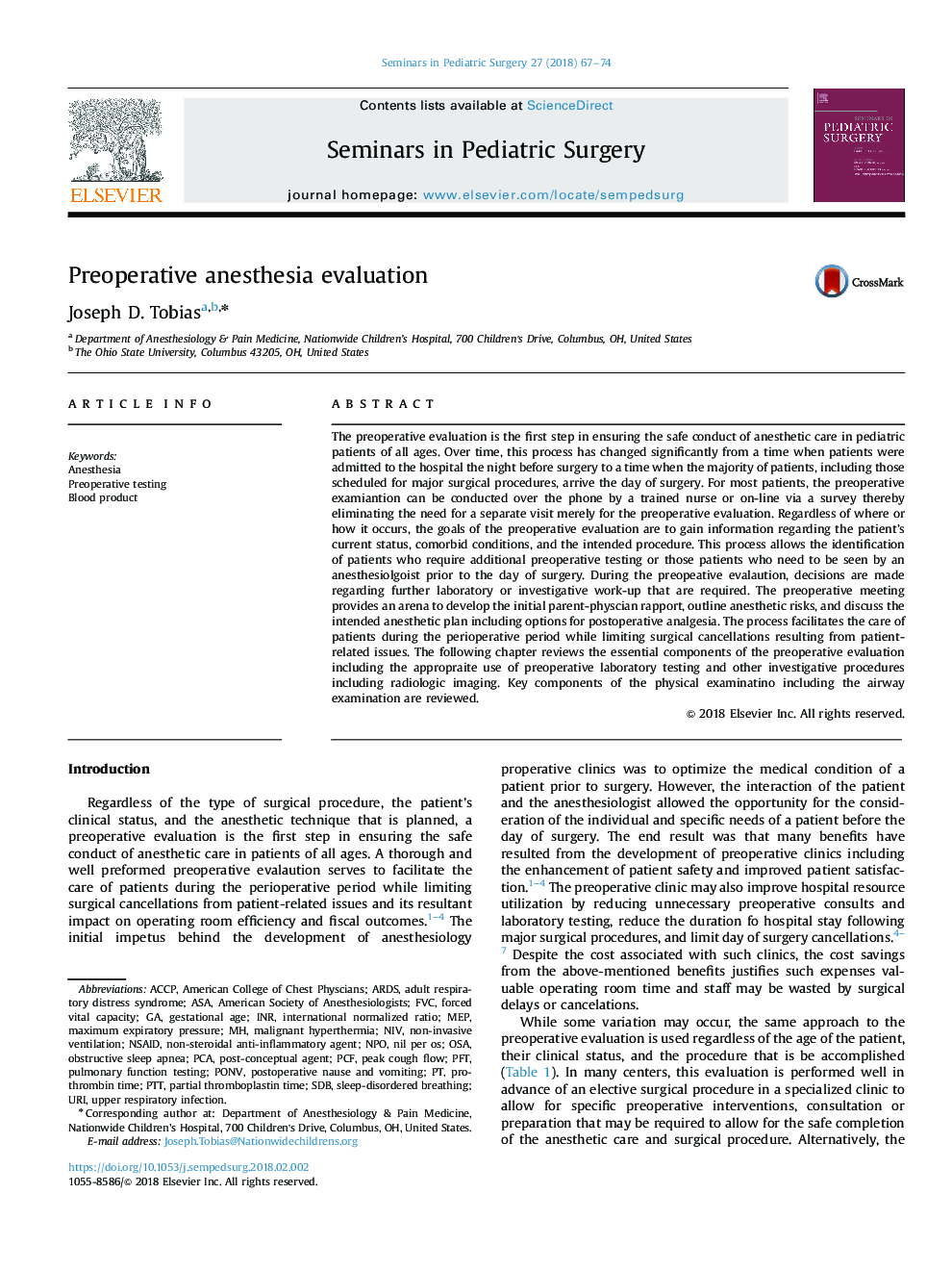| Article ID | Journal | Published Year | Pages | File Type |
|---|---|---|---|---|
| 8813794 | Seminars in Pediatric Surgery | 2018 | 8 Pages |
Abstract
The preoperative evaluation is the first step in ensuring the safe conduct of anesthetic care in pediatric patients of all ages. Over time, this process has changed significantly from a time when patients were admitted to the hospital the night before surgery to a time when the majority of patients, including those scheduled for major surgical procedures, arrive the day of surgery. For most patients, the preoperative examiantion can be conducted over the phone by a trained nurse or on-line via a survey thereby eliminating the need for a separate visit merely for the preoperative evaluation. Regardless of where or how it occurs, the goals of the preoperative evaluation are to gain information regarding the patient's current status, comorbid conditions, and the intended procedure. This process allows the identification of patients who require additional preoperative testing or those patients who need to be seen by an anesthesiolgoist prior to the day of surgery. During the preopeative evalaution, decisions are made regarding further laboratory or investigative work-up that are required. The preoperative meeting provides an arena to develop the initial parent-physcian rapport, outline anesthetic risks, and discuss the intended anesthetic plan including options for postoperative analgesia. The process facilitates the care of patients during the perioperative period while limiting surgical cancellations resulting from patient-related issues. The following chapter reviews the essential components of the preoperative evaluation including the appropraite use of preoperative laboratory testing and other investigative procedures including radiologic imaging. Key components of the physical examinatino including the airway examination are reviewed.
Keywords
ACCPPFTINRPCFARDSnpoNil per osNIVURIFVCPONVMEPPTTNSAIDBlood productASASDBPCAPulmonary function testingPreoperative testingobstructive sleep apneasleep-disordered breathingAmerican Society of AnesthesiologistsOsaAnesthesiaNon-invasive ventilationPeak cough flowmaximum expiratory pressurePartial thromboplastin timeprothrombin timegestational ageadult respiratory distress syndromeforced vital capacitynon-steroidal anti-inflammatory agentUpper respiratory infectionInternational Normalized Ratiomalignant hyperthermia
Related Topics
Health Sciences
Medicine and Dentistry
Perinatology, Pediatrics and Child Health
Authors
Joseph D. Tobias,
